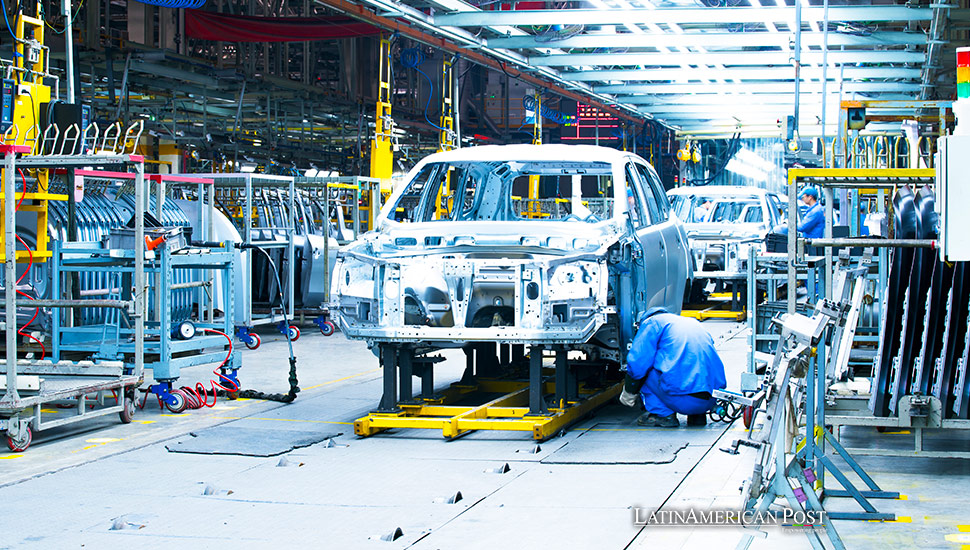Floods in Brazil: Impact on Auto Industry and National Recovery

As torrential rains devastate Rio Grande do Sul, Brazil, the local auto industry faces severe disruptions. With factories stalled and logistics crippled, the sector’s resilience is tested amid a broader national crisis.
In the wake of devastating floods in Rio Grande do Sul, Brazil, the automotive sector faces unprecedented challenges. This disaster has caused widespread destruction and significantly disrupted the local economy, particularly affecting the automotive industry, a vital driver of the region’s economic engine.
The Association of Automobile Manufacturers of Brazil (Anfavea) expressed concerns this Wednesday about the potential impacts of the ongoing floods on the production chain. During a press conference, Márcio Leite, the association’s president, highlighted that ten manufacturers and a vast network of suppliers in the southern region are experiencing severe disruptions. “The impact is substantial across the entire chain,” Leite noted.
Claudio Shad, president of the Union of Automotive Component Industries, provided more granular details. A survey among component factories in Rio Grande do Sul revealed significant stoppages, particularly around Porto Alegre, where facilities are wholly paralyzed due to floodwaters. While some areas of the state are less affected, allowing production to limp on, logistical nightmares abound due to road closures that block the transportation of essential components to assembly plants.
In Gravataí, the situation is slightly better, with factories only mildly affected and alternative transportation routes being utilized. However, factories in the Caxias area find themselves isolated and cut off from supply lines and distribution networks.
Despite these challenges, Shad remains optimistic that the industry can maintain operations without a shortage of components. He believes that the current difficulties are temporary and will be swiftly overcome. “We are working to minimize the impact of this tragedy as much as possible,” he asserted, though he admitted that the severe conditions might affect next month’s production figures.
The broader picture in Rio Grande do Sul is grim. According to the latest report from Civil Defense, the torrential rains and resulting floods have left at least 95 people dead and 128 missing. Neighboring state Santa Catarina also reported casualties. The disaster has affected 1.5 million people, with approximately 400 injured and 80% of municipalities in Rio Grande do Sul impacted by the floods.
Human and Economic Toll of the Crisis
The floods have laid bare the vulnerabilities in the region’s infrastructure and emergency preparedness. The automotive sector, pivotal to Brazil’s economy, especially in Rio Grande do Sul, underscores a larger narrative of how climate change and environmental disasters increasingly impact industrial operations and economic stability in Latin America.
The region’s dependence on localized industries, such as automotive manufacturing, makes it particularly susceptible to such disruptions. Policymakers and business leaders have been aware of the potential risks for years. Still, the recent events have injected a new urgency into the discourse on sustainable industrial practices and disaster readiness.
Brazil’s current crisis could serve as a wake-up call in Latin America, where many countries are prone to natural disasters such as floods and earthquakes. It highlights the need for comprehensive strategies integrating environmental considerations with industrial planning to ensure resilience against future catastrophes.
Moreover, the economic implications of these disruptions are far-reaching. The automotive industry in Brazil is not only a significant employer but also a major contributor to GDP. The current interruptions could have ripple effects across the national economy, affecting everything from export volumes to local job markets.
As the region begins to recover and rebuild, the lessons learned from this crisis will likely influence future approaches to industrial development and disaster management in Latin America. Integrating more robust infrastructure, better predictive models for climate-related events, and a more agile response mechanism are imperative.
Humanity Amidst Crisis
Furthermore, the human cost of these floods must be considered. The loss of life and the displacement of thousands of families bring a human dimension to the economic calculations, reminding stakeholders that beyond the production lines and supply chains are communities that bear the brunt of these disasters.
Also read: Lula Presses for Brazilian Beef Imports in Japan Trade Talks
As Brazil navigates this challenging period, the resilience of its people and the strategic responses from its industries will be pivotal in shaping the nation’s path forward. For the automotive sector, in particular, this is a critical moment to reassess and reinforce its operations to withstand the current crisis and future challenges in an increasingly uncertain global climate.




